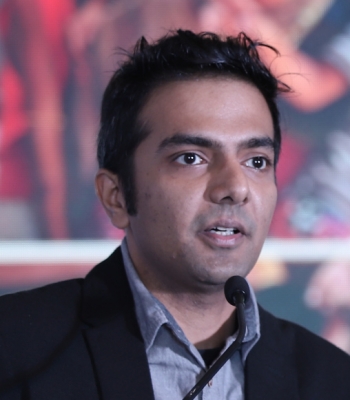New Delhi, July 1 (IANS/ 101Reporters) In 2017, the Balipara Foundation ran a pilot project to restore the habitat corridor of Asian elephants in Udalguri, Assam.The region is endemic to the gentle giants, stretching from Assam to Arunachal Pradesh and crossing over to Bhutan.
This habitat shrunk over the decades due to rampant deforestation, leading to an increase in human-elephant conflict, spelling trouble for both the indigenous tribes of the region and the elephants.
To mitigate these consequences, the Balipara team put together a Rural Futures programme, focused on striking a balance between the ecology and livelihoods of local residents.
It was started in 2020 in Baligaon village in Sonitpur and was later expanded to other parts of the state, as well as Nagaland and Manipur.
In conversation with Saurav Malhotra, the brain behind the Rural Futures programme, 101Reporters goes into the depth of the initiative.
Q: How did you envision Rural Futures unfolding? How are you making sure that you meet your goals?
A: The core idea behind our work is that we need more forests in as natural a way as possible.The Eastern Himalayan range is a huge ecosystem, defined by large rivers like Brahmaputra, diverse wildlife like elephants, royal Bengal tigers and one-horned rhinos.
The forests regulate everything from livelihoods to water supply and food.
The wave of deforestation here started about 140 years ago, when tea plantations came into the region, though it was most heavily felt in the past three to four decades.
This felling of trees continued due to insurgency challenges, later giving way to infrastructural projects.The ecological damage extended to the quality of soil in the agricultural land the forests encompassed, and this loss of fertility, in turn, affected farmers’ produce.
Besides agriculture, the livelihoods of around 60% of the people here are dependent on forestry and ecotourism.However, with deforestation, residents turned to logging to augment their income, the easiest option here, highlighting the vicious cycle the region and its people are caught in.
Furthermore, even though this part of Northeast India receives the highest amount of rainfall in the world, it still faces grave water issues due to poor groundwater recharge system — another consequence of the loss of forest cover.
So in 2016, within the Rural Futures model, the Balipara Foundation set out to find a way to engage indigenous communities in the restoration of this ecosystem.
It was a challenge to involve them with no economic compensation, so we devised a mechanism to compensate them.Given that a forest needs 10 to 30 years to be restored, we turned to cultivating crops on monoculture and fallow land as a medium-term solution — instead of asking communities to wait for over a decade to harvest fruit or sustainable timber.
The people were the most important component of the programme.
We focused on building local leadership and the skills of youth to lead the Rural Futures initiative.
Together with the communities, we designed agroforestry plots for their farmland that could grow 10 crops.This not only ensured that they don’t lose all 10 crops at one go to any kind of weather phenomenon but also raised local incomes by about 40 per cent in a year and almost 100 per cent in three years!
Q: Did the community have any apprehensions when first approached?
A: A common question we got was related to the proximity of the elephants.They feared that the animals, which continued to venture into their land even with a degraded forest cover, would harm them further if the forests redeveloped closer to their homes.But they needed to understand that elephants enter human settlements only in search of food, which was scarce in the forest at the time.
If ecosystems are restored, bearing in mind the migration path of elephants and the availability of food, they will remain in their habitats and not venture close to humans.Restoring their habitat is the permanent solution to human-animal conflict.
Q: And at what level do you start engaging with the local residents?
A: This depends on the state.Most Northeastern states have different mechanisms of governance and land ownership.
In Assam, the government owns most forests as protected areas.We engage with the forest department but begin with the elders of the village.
The Joint Forest Management Committees (JFMCs) here are mostly dormant, so we find and revitalise them.We set up meetings with JFMCs as well the local youth, district forest officer and regional government.
So in Assam, communities lead the programme from day one.It takes about six months to a year to engage and mobilise the community, depending on its size and that of the area we want to restore.
Q: Is it a challenge to negotiate with the forest department?
A: It takes a while to convince the forest department of the merit of the programme because to accept such an initiative, they need to accept that there’s been deforestation.Though if one begins to restore the forests with whatever kind of partnership, be it with the government or local community, the benefit is ultimately shared, isn’t it?
It’s easier to convince them from an economic angle.After COP26, I think India set great targets, which we can begin to meet collectively.We can no longer afford to proceed with measures that resolve just ecological or economic problems independently of each other.
We believe that all the problems in Northeast India are connected to the ecology of the region.Once you fix the ecology, you will begin to fix the economy and also improve people’s standard of living.
This is the lobbying pitch I share with the government — or anyone else!
Q: Would Rural Futures have been possible without community involvement?
A: Not at all.The power of the community is bigger than the power of the economy in this project.It’s institutionally impossible for any one organisation to work across Northeast India and plan the number of things we have to plan.Even the government’s restoration plans cover a limited spread of land.It’s key that we consider our idea bigger than any other.The land doesn’t belong to you or me; it belongs to the community.
Ultimately, it has to be led by them and the youth to be a sustainable initiative.
Q: What categories of lands are being restored?
A: Through various models of partnerships with governments and communities, we restored some 10,000 hectares of land in Northeast India.A huge chunk of this is in Assam, and parts of it are in Nagaland and Manipur.There’s a 40:60 ratio between government-protected land and land that’s legally owned by communities.
Restoring forests and restoring farmland are the two aspects of the project.Farmland that’s owned by a family or shared among the community is restored, along with community-owned common land, which is commonplace in the Northeast.
The agroforestry model is also in similar categories of land.
Now with regard to forest restoration.Take Nagaland, for example.Here, a plot of land may be collectively owned by the community as their forest; another chunk of forest cover may be divided among families.
In the latter case, the benefits from the harvest are divided among the members of the community in proportion to the share of forestland they own.Communities usually nominate the biggest group to manage these agroforestry lands; the youth group manages the harvest, purchase and sale of the produce from these lands.The community then democratically decides what to do with the money earned.
Q: Is their harvest covered under the forest product MSP? What are the market links like?
A: All non-agroforestry crops are endemic to the region and are allowed to be harvested and sold.But the whole of the Northeast lacks market links; the region possibly has the poorest supply-chain infrastructure in the country.We try to promote the purchase and sale of the produce in local markets, which are essentially clusters of four to five villages here, meeting a couple of times a week.
We don’t encourage communities to grow anything that has to be exported — even to the capital city — and instead stick to local markets.We are cognisant of the potential of these agroforestry products because of their high quality, but it may take two to three years to reach the potential for such growth.
Q: Would you say Rural Futures is replicable or scalable?
A: After five years of learning, falling and relearning, we currently have a replication toolkit that’s been used in many states across the Northeast.It’s definitely a module that can be scaled, though we’re still trying to optimise how effectively and quickly.
With regard to scalability.this programme can be effectively taken to any part of the world where there are people ready to get involved.
It has immense potential across South Asia, Central Africa and Latin America.We need to understand as a global society that nature forms the bedrock of our economy.
Ecological-centric development does not mean you don’t have industry.You can have industry centred around nature — think bamboo or sustainable wood — because without ecology, where is your economy?
(This is an edited version of a telephonic interview conducted by Ayswarya Murthy and Aishwarya Tripathi of 101Reporters, a pan-India network of grassroots reporters.)
101Reporters desk/dpb
#Saurav #Malhotra #Delhi #Aishwarya # Aishwarya # Arya #Arya #Aishwarya #Arunachal Pradesh # Assam #Delhi #New Delhi #Nagaland # Assam #Chase #Idea #Ford
.






